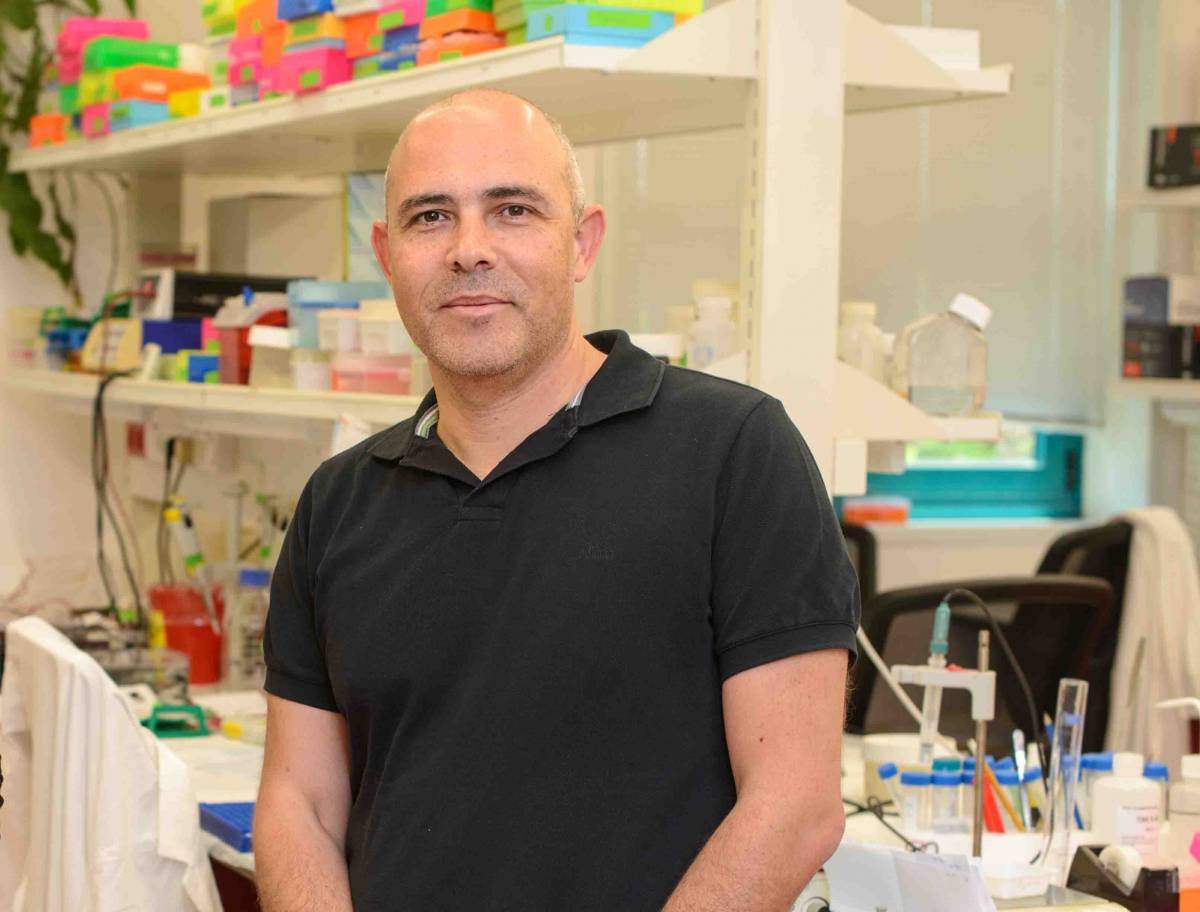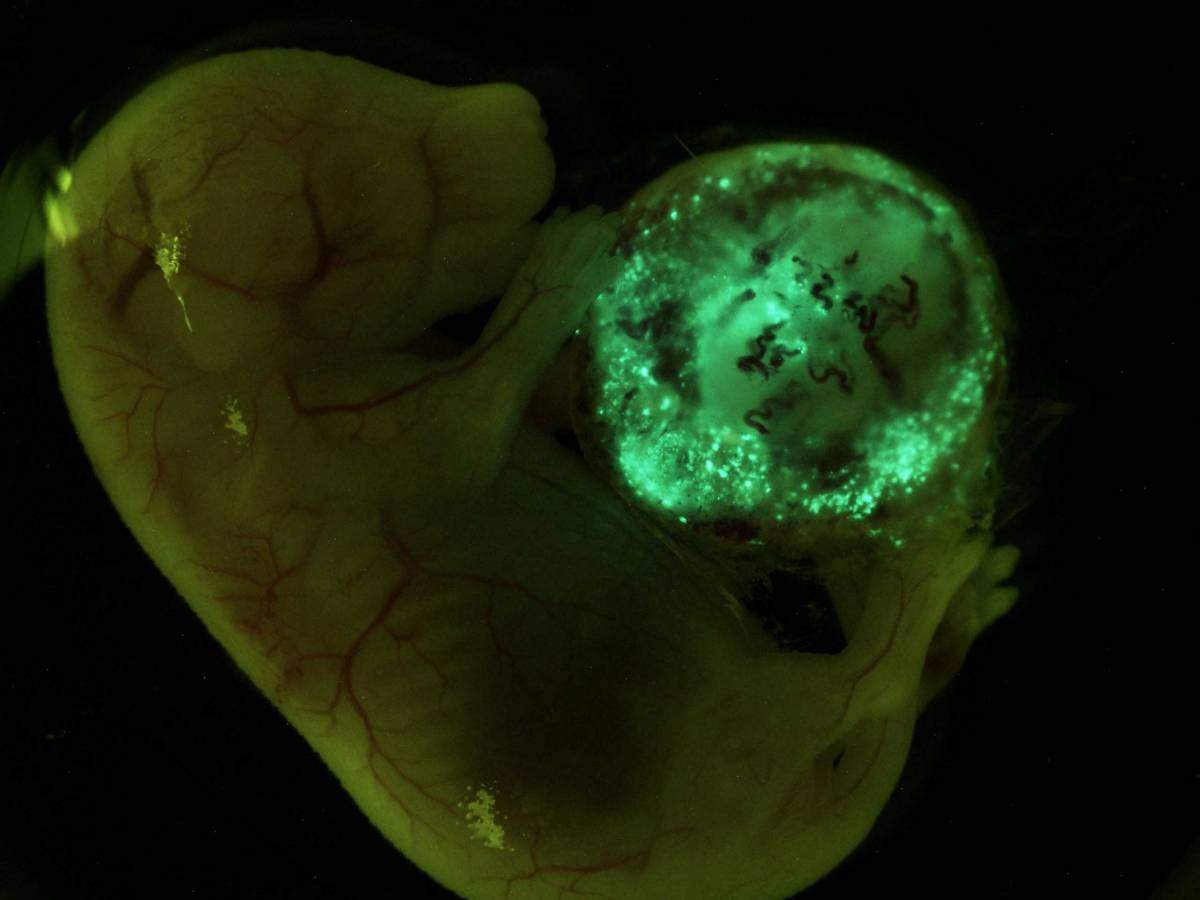Are you a journalist? Please sign up here for our press releases
Subscribe to our monthly newsletter:
Are you a journalist? Please sign up here for our press releases

The seeds of adolescence are planted even before birth – in pregnancy – and the messages passed from the mother to her unborn child can have an enormous influence on their later life. What, exactly are these messages and how are they passed on? New research at the Weizmann Institute of Science reveals one of the mechanisms of this communication – small RNA molecules that influence the teen’s risk of developing an eating disorder. The results of this research appeared recently in Nature Communications.
“The messages a mother passes to her fetus can help it survive,” explains Prof. Alon Chen of the Institute’s Neurobiology Department. “If food is scarce, for example, the messages may tell the fetus to build its body efficiently and slow down its metabolism.” This is a type of programming – the messages become internalized, part of plan for the growing child. Sometimes, however, there may be a misfit between the message and reality. Chen: “If a young person has been programmed for an efficient, slow metabolism, but their environment is full of food, they may be more likely to become obese and develop metabolic syndrome.”
Previous research in Chen’s lab had revealed a link between stress during pregnancy, messages passed from mother to fetus and eating disorders. The present study, led by Dr. Mariana Schroeder, a former postdoctoral fellow at the Weizmann Institute and currently a project leader at the Max Planck Institute of Psychiatry, focused on a specific eating disorder: anorexia nervosa, a psychiatric condition that has the highest death rate of any mental illness. Ten times more likely to strike women than men, anorexia generally appears around adolescence. In the past, it was thought that this disorder was tied to stress factors in early life, or possibly Western culture that prizes young, thin bodies. But Chen’s research suggested that the risk for the illness could be rooted in pregnancy.

To investigate, the researchers developed a mice that had a tendency to show signs of this eating disorder. As in humans, the disorder was much more prevalent in the female mice, and it appeared around puberty. But, in contrast with the scientists’ predictions, the female mice born to mothers that had experienced stress did not display anorexic eating habits when they reached puberty. “It seemed that stress during pregnancy actually ‘immunizes’ the offspring against anorexia,” said Chen.
So were there ‘anti-anorexic’ messages getting passed from mother to fetus? The researchers looked at the placenta – which passes the messages, along with food and oxygen, to the fetus. They suspected that the message would be in the form of a microRNA – a short molecule that regulates protein production – and so they mapped the levels of all of the microRNA in the placenta. They identified one whose levels plummeted following stress in the mother. That molecule is generally linked to the sex of the fetus: Females are exposed to about ten times as much as males. So female fetuses, in the face of stress, may become more ‘male’ and thus be more protected from developing anorexia later on.
Chen’s research suggested that the risk for the illness could be rooted in pregnancy
To understand whether the levels of this molecule can, indeed, influence the later development of anorexia, the researchers managed to genetically engineer the their mother mice such that the microRNA they had identified was overexpressed in the placenta. They found that in both sexes there was a heightened incidence of anorexia: In females, the percentage was 70%, in comparison to 40% in the control group; for males it was 50%, as opposed to a mere 10% in the control group.
Chen: “On the one hand, evolution may favor things that prepare the fetus for the environment to which they must adapt, but, on the other, that fetus is extremely protected in the womb, including from swings in its mother’s mental states. The placenta is a filter, and it can neutralize, for example, the stress hormone cortisol before it can reach the fetus.”
Protecting yet directing
The researchers discovered that the microRNA they had identified affects the expression levels of proteins that play significant roles in the placenta’s function; this, in turn, can cause dramatic changes in protein expression in the hypothalamus of the developing fetus. The hypothalamus regulates, among other things, our eating, and this part of the brain, in particular, has been linked to anorexia.
Chen: “We tend to think of the placenta as just a system of blood vessels, but it is much more than that. What the mother experiences can be passed on to the fetus – or blocked before getting there – and the messages that become part of the programming during this time can have an immense influence on the future health and development of the young person. We know that the changes around puberty can unleash mental health issues, but what we have shown with this research is the way that the tendencies to develop these problems may be rooted in the messages the adolescents received even before they were born.”
Prof Alon Chen heads the Murray H. and Meyer Grodetsky Center for Research of Higher Brain Functions, the Nella and Leon Benoziyo Center for Neurosciences, and the Norman and Helen Asher Center for Brain Imaging. Prof. Chen's research is supported by the Perlman Family Foundation, Founded by Louis L. and Anita M. Perlman; the Adelis Foundation; the Appleton Family Trust; Mr. and Mrs. Bruno Licht; the estate of Louis J. Marschak; and the Ruhman Family Laboratory for Research in the Neurobiology of Stress.

Our website uses cookies to enhance user experience by remembering your preferences and analyzing website traffic.
For more information about how we use cookies please read our